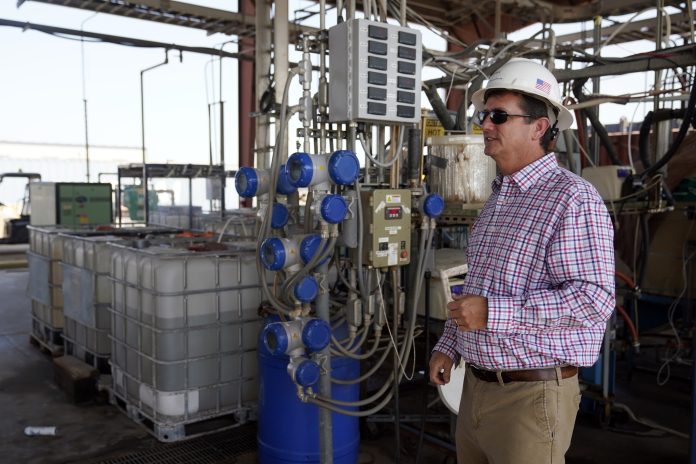
Long considered a worthless nuisance, the produced water from oil and natural gas wells may end up bringing yet another treasure to a region already packed with them.
Lithium is a a soft, silvery white alkali metal used to make batteries for electric vehicles and mood-stabilizing medicine. It was worth $17,000 a ton in the United States in May, more than double what it brought in 2020, and its price in China rose from $9,000 per metric ton (2,205 pounds) last January to $27,400 in November.
Waco economist Ray Perryman, Texas Independent Producers & Royalty Owners President Ed Longanecker and Permian Basin Petroleum Association Executive Vice President Stephen Robertson say it is an exciting prospect that is being actively looked into.
“There is a lot of uncertainty and ambiguity surrounding this technology and its future,” Perryman said. “There are already companies in the U.S. extracting lithium from oilfield brine, thus the possibility certainly exists.
“There are a number of issues, however, that could and likely will slow extensive development. The lithium market is somewhat volatile with prices fluctuating particularly intensely due to the pandemic as well as in response to shifts in perceived future demand.”
Perryman said notable additional processing is required for some for some types of lithium and various applications require different types of it.
“Clearly, if the global supply of lithium is insufficient the availability and price of electric vehicles will be affected as will the pace of adoption,” he said. “Many analysts predict shortages of lithium in the future due to use in EV and other batteries. If estimates of the deployment of EVs are accurate, there could be sufficient price increases to support additional production capacity.”
The economist said an advantage of using oilfield brine “is that it is superior from an environmental perspective to the mines needed to extract lithium from rocks.
“Basically, it can be thought of as adding another step in the wastewater treatment process,” he said. “The technology continues evolving and improving and there is reason to believe that oilfield brine may represent one of the best sources.
“How the market develops will depend on a number of factors. One is the state of extraction technology and how the economics develop. As lithium supplies tighten, there will be incentives to invest in lithium capacity. It’s important to note that the concentration of lithium in oilfield brine varies substantially across production areas and water sources and there has not been widespread testing or implementation to date.”
Perryman said current research indicates that the most promising lithium-producing oil and gasfields are the Marcellus Shale Play near Syracuse in Central New York , the Smackover in Ouachita and Union counties in south-central Arkanasas and the big Bakken in eastern Montana, western North Dakota and the Canadian provinces of Saskatchewan and Manitoba.
“There has not been extensive evaluation of the Permian Basin to this point,” he said. “How quickly and extensively this technology is developed will depend on lithium demand, the cost and effectiveness of this source relative to others and the demonstration of returns sufficient to attract the needed capital.
“The fact that oil and gas production will be required for decades and that water treatment will become increasingly important suggest that lithium extraction from brine will be advantageous, but there are currently too many unknowns to realistically gauge the prospects.”
Longanecker said there is growing interest and related research focused on extracting lithium and a myriad of other potentially useful elements from produced water.
“Oil and natural gas operators and academia are all looking at opportunities and solutions, including the University of Texas at Austin, which has designed membranes for the separation of lithium over other ions such as sodium,” Longanecker said from Austin. “It’s certainly possible, but we are in the early stages and questions remain if lithium can be extracted in commercial quantities.”
Robertson said it “is absolutely feasible to extract rare earth metals, including lithium, from produced water.
“But the metals have to exist in large enough quantities to make it economically feasible,” Robertson said. “I have yet to hear from anyone in the Permian Basin who has determined that any rare earth metal exists in a high enough quantity, if even at all, to encourage the mining of these metals from produced water here.
“That doesn’t mean it isn’t possible or economically feasible in other basins. It may ultimately be feasible in the Permian Basin, but I have not heard of anyone who has determined that to be the case.
“I’ve heard from enough folks on the topic, however, that I know people are looking and will keep looking into this opportunity and other opportunities regarding produced water.”



